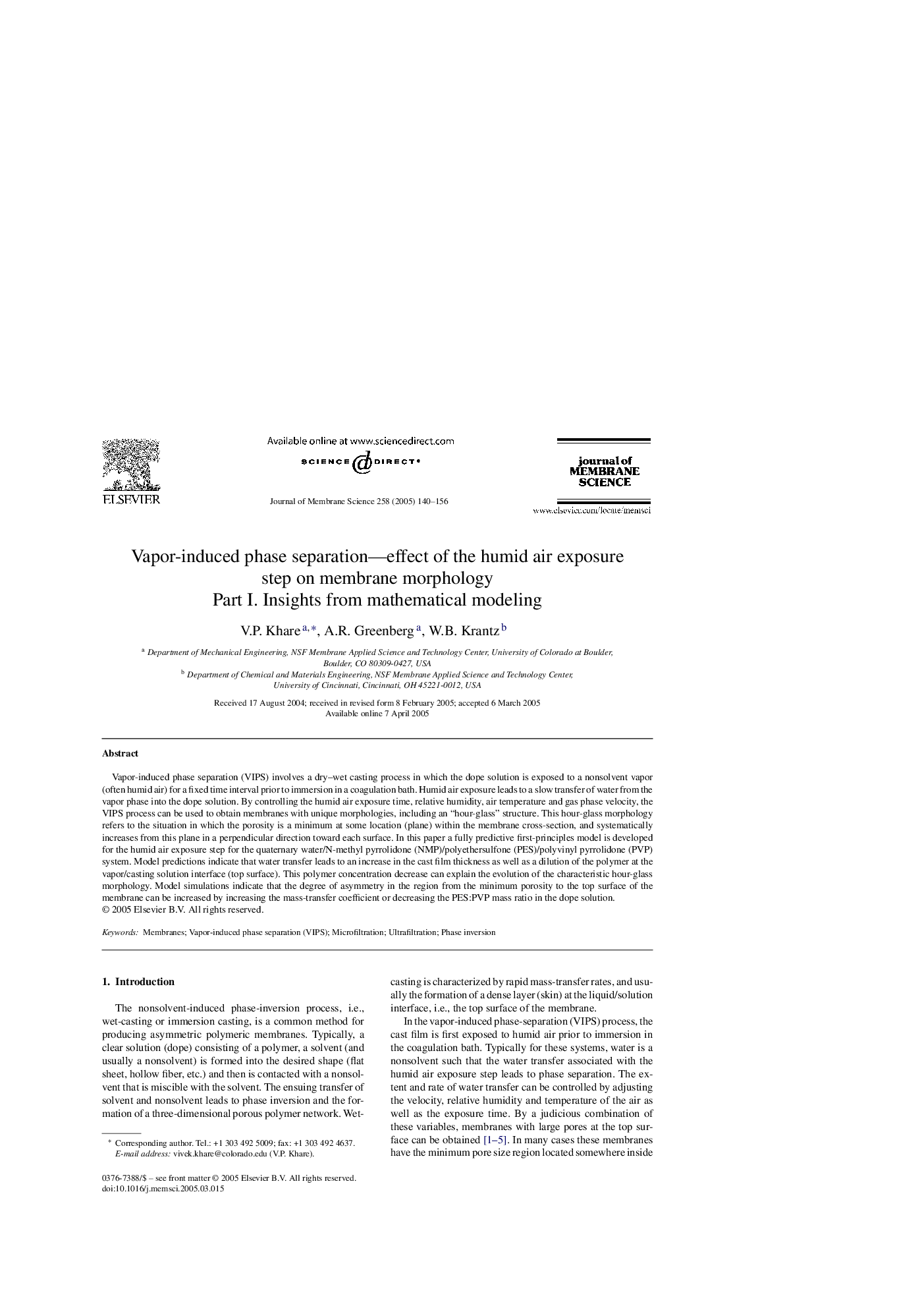| Article ID | Journal | Published Year | Pages | File Type |
|---|---|---|---|---|
| 9684768 | Journal of Membrane Science | 2005 | 17 Pages |
Abstract
Vapor-induced phase separation (VIPS) involves a dry-wet casting process in which the dope solution is exposed to a nonsolvent vapor (often humid air) for a fixed time interval prior to immersion in a coagulation bath. Humid air exposure leads to a slow transfer of water from the vapor phase into the dope solution. By controlling the humid air exposure time, relative humidity, air temperature and gas phase velocity, the VIPS process can be used to obtain membranes with unique morphologies, including an “hour-glass” structure. This hour-glass morphology refers to the situation in which the porosity is a minimum at some location (plane) within the membrane cross-section, and systematically increases from this plane in a perpendicular direction toward each surface. In this paper a fully predictive first-principles model is developed for the humid air exposure step for the quaternary water/N-methyl pyrrolidone (NMP)/polyethersulfone (PES)/polyvinyl pyrrolidone (PVP) system. Model predictions indicate that water transfer leads to an increase in the cast film thickness as well as a dilution of the polymer at the vapor/casting solution interface (top surface). This polymer concentration decrease can explain the evolution of the characteristic hour-glass morphology. Model simulations indicate that the degree of asymmetry in the region from the minimum porosity to the top surface of the membrane can be increased by increasing the mass-transfer coefficient or decreasing the PES:PVP mass ratio in the dope solution.
Related Topics
Physical Sciences and Engineering
Chemical Engineering
Filtration and Separation
Authors
V.P. Khare, A.R. Greenberg, W.B. Krantz,
